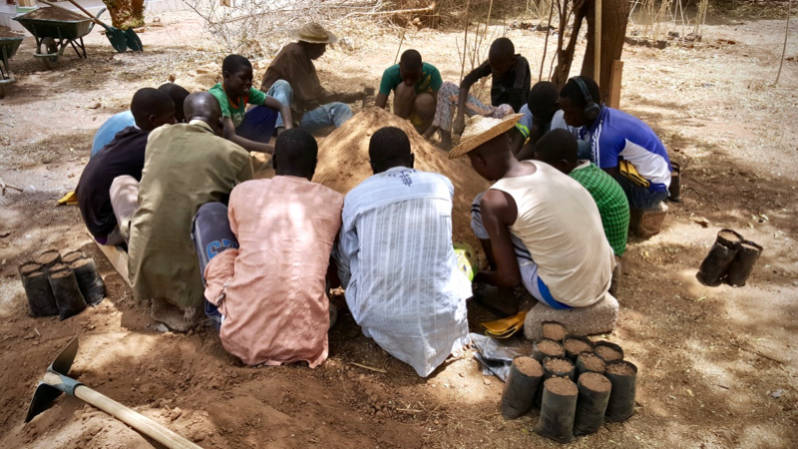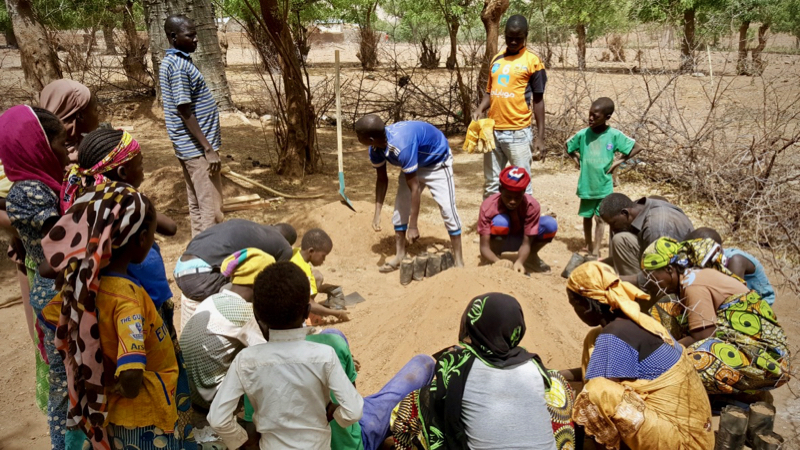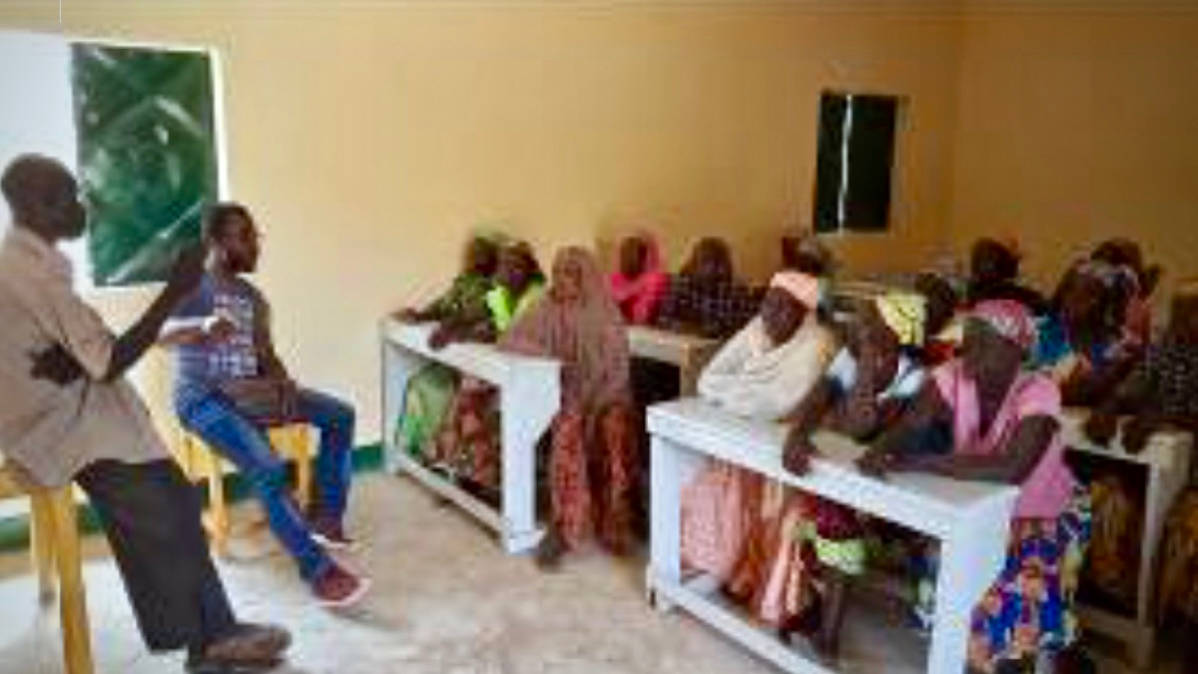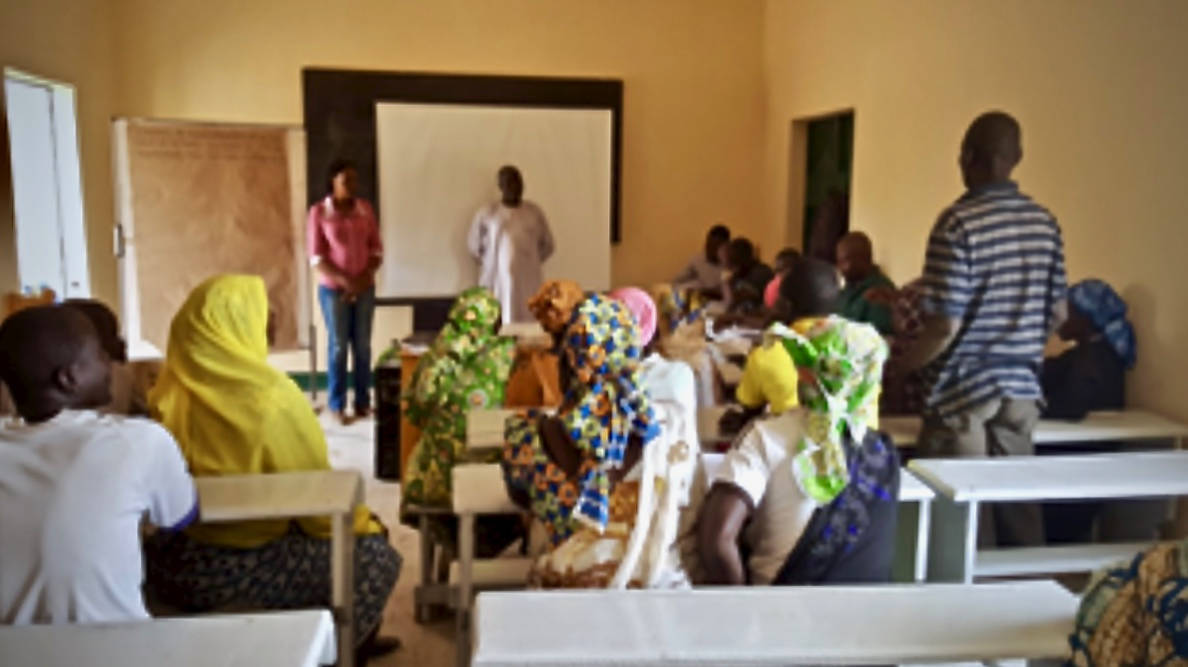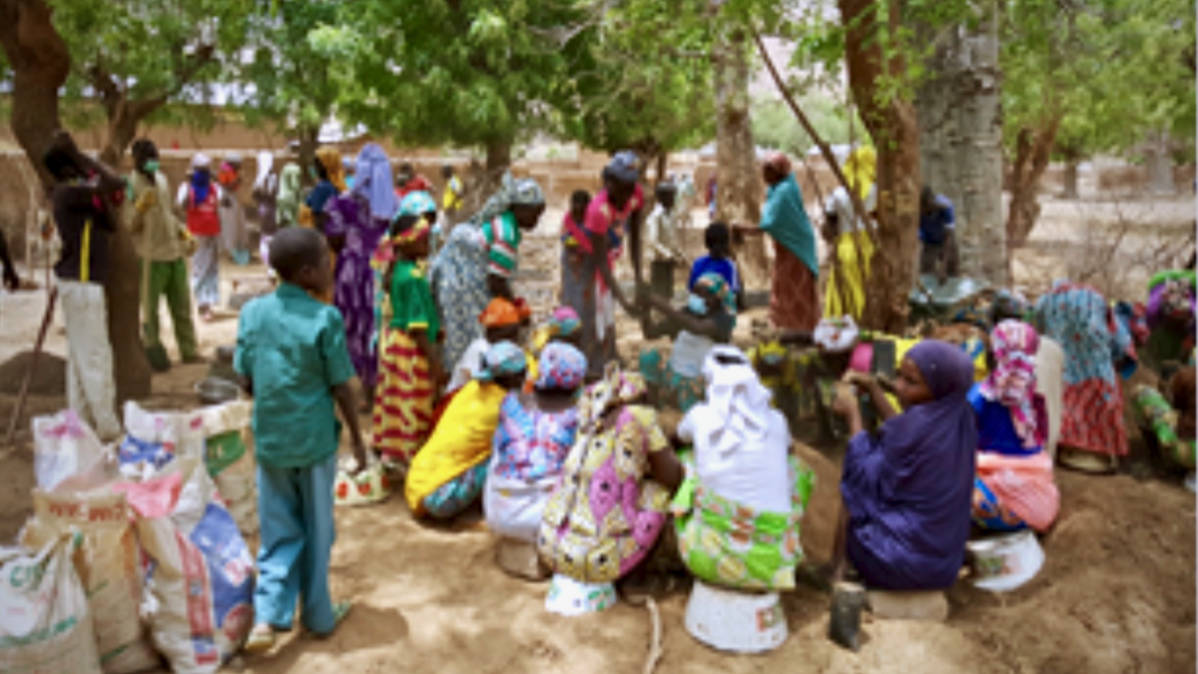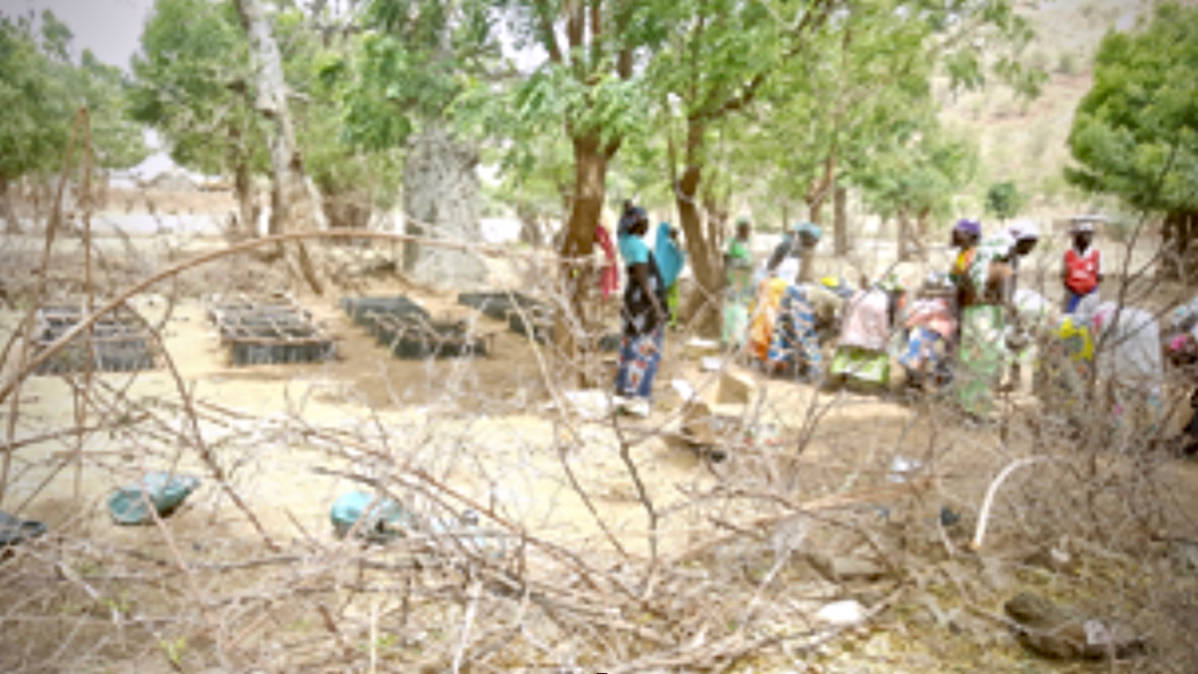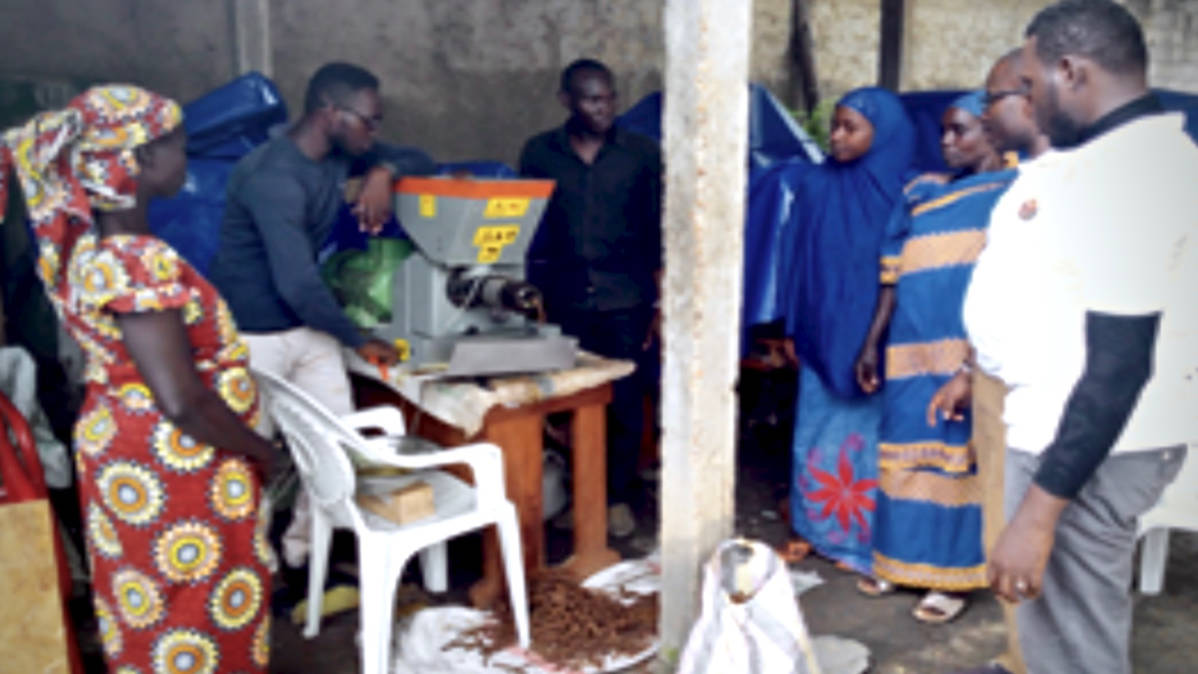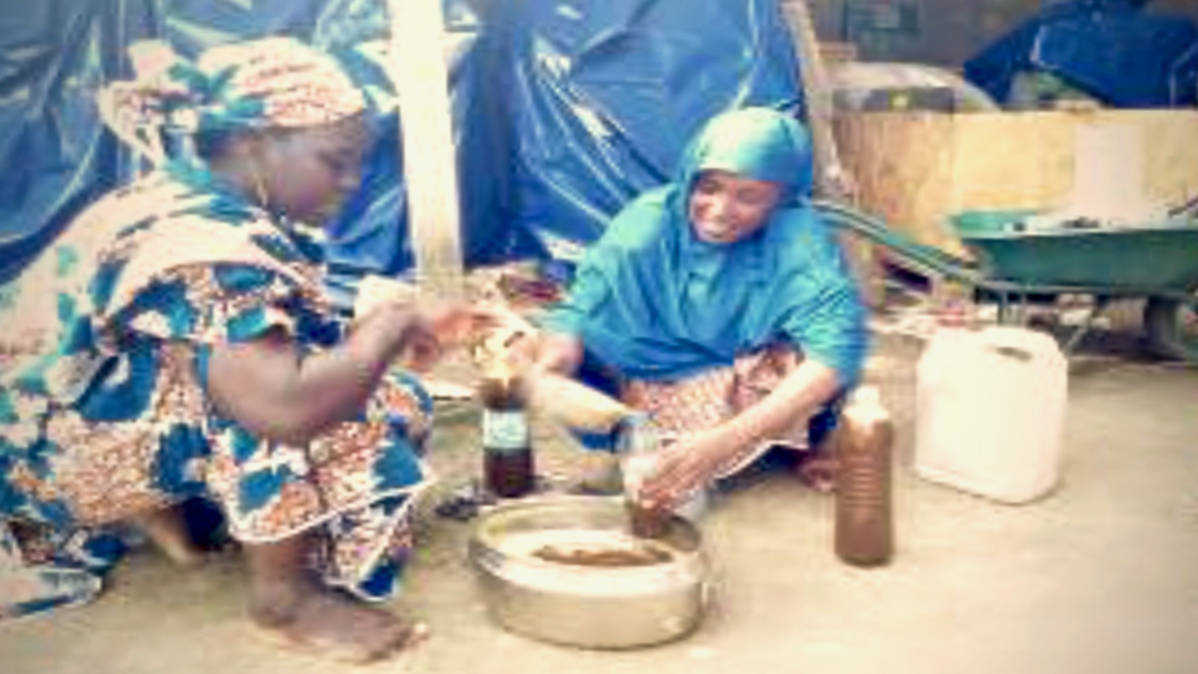Consolidating the Participation of Women in Forest Landscape Restoration
Global restoration initiatives for climate change mitigation actions and livelihood options
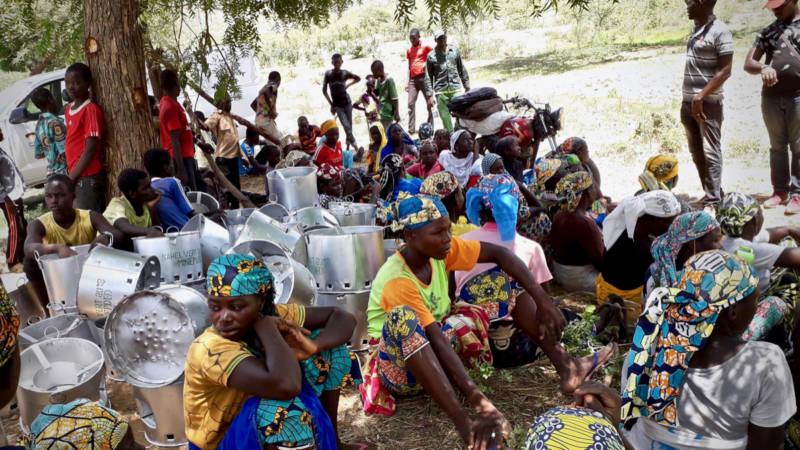
Sensitization of women on efficient fuel-wood use and distribution of improved stoves with partner support, MINEPDED
The African Forest Landscape Restoration Initiative (AFR100) aims to bring 100 million hectars of degraded forest landscapes in Africa under restoration by 2030. Forest landscape restoration is commonly understood as “a planned process that aims to regain ecological integrity and enhance wellbeing in deforested and degraded landscapes” (Dudley et al. 2005). Forest landscape restoration is, and will be, implemented in countries and contexts with weak governance systems, histories of land tenure conflicts and structural discrimination of women and indigenous communities.
Using a range of restoration approaches and applying a gender approach is a valuable option to ensure forest landscape restoration takes place. The essence of gender-responsive forest landscape restoration is to make sure that women and men at all levels have an equal voice and influence in strategic decisions related to forest landscape restoration, and that this contributes to substantive equality in outcomes for women and men. ‘Free and prior informed consent’, ‘fair’ and ‘just’ compensation, and impartial and effective grievance mechanisms for all those affected are critical to safeguarding the rights of local and indigenous women and men. This falls in line with decisions about target areas for restoration, choice of stakeholders for forest landscape restoration governance and how to include them, restoration approaches, priority species and how to monitor progress. The process should be made following gender-inclusive participatory processes to capitalize on the knowledge and experiences of both women and men. It is important to consider feasible mechanisms and measures at various scales required to equitably distribute benefits and costs associated with restoration for both women and men in participating communities. The above include elements proposed by CIFOR and FAO in implementing an approach that takes into account gender responsiveness according to global experiences.
Numerous studies have found that encouraging and incentivizing women’s participation can enhance the effectiveness and sustainability of forest management (e.g. Agarwal 2010; Coleman and Mwangi 2013; Leisher et al. 2016). Yet, despite potential synergies between restoration and gender equality outcomes, gender remains poorly addressed in restoration research and practice (Clewell and Aronson 2013; Broeckhoeven and Cliquet 2015). There exist some practical case studies in many African countries which give evidence that women can play a significant role in forest restoration and rehabilitation. In Niger, for example, the inclusion of women in decision making was fundamental in addressing land conflicts and managing the regeneration process of degraded forests.
Considerations prior to actions
The Sustainable Development Goals take into account that gender equality and women’s empowerment are a cornerstone of sustainable development. SDG5 on gender equality and women’s empowerment includes targets of equal participation in decision making (5.5.), equal rights to resources (5.a.) and policies to promote equality and empowerment (5.c.).
According to other recommendations by the framework for design and evaluation proposed by Bimbika et al in a publication on Gender Matters in Forest Landscape Restoration, gender-responsive restoration necessitates enabling women and men at all levels to have an equal say in strategic decisions related to forest landscape restoration. It should equally follow up to ensure this translates into substantive equality in forest landscape restoration outcomes. This requires that women and men in indigenous and local communities are recognized as rightsholders and legitimate stakeholders who can exercise voice and influence in changes in land use from forest landscape restoration, governance of forest landscape restoration and distribution of resultant benefits and costs.
Insight into the socio-cultural context of women’s involvement in development initiatives in the Far-North Region
The cultural practice in most of the communities in the Far-North Region limits women participation in many programs that bid towards community development. The traditional design does not leave room for women’s contribution towards meeting proposed goals. Women are hardly entertained in gatherings with men during which decisions are made. It is usually either men joining the women in women targeted programs (where they find intrinsic benefits) or they abandon them to their own ‘mercy’ during such ventures. It was noticed in the context of Mogazang:
- 65% of men in the Mogazang community are involved in other activities that warrant them to have less interest in reforestation or tree planting. In cases where they do take part, it should be a lucrative venture that will fetch them some reasonable money.
- The population here depends solely on shifting agriculture (millet, sorghum and maize) for both household sustenance and income (for those who produce more).
- The main income source in this community is fuel wood marketing, with an all year-round wood market breeding in the area and supplying the city (annual quantities still to be estimated).
- Women are more accessible than men, they spend most of their time at home — especially during the dry season — taking care of the family and hardly have significant income sources apart from fuel wood harvesting for household consumption.
Contribution of GIZ/ProPFE to Global Restoration initiatives
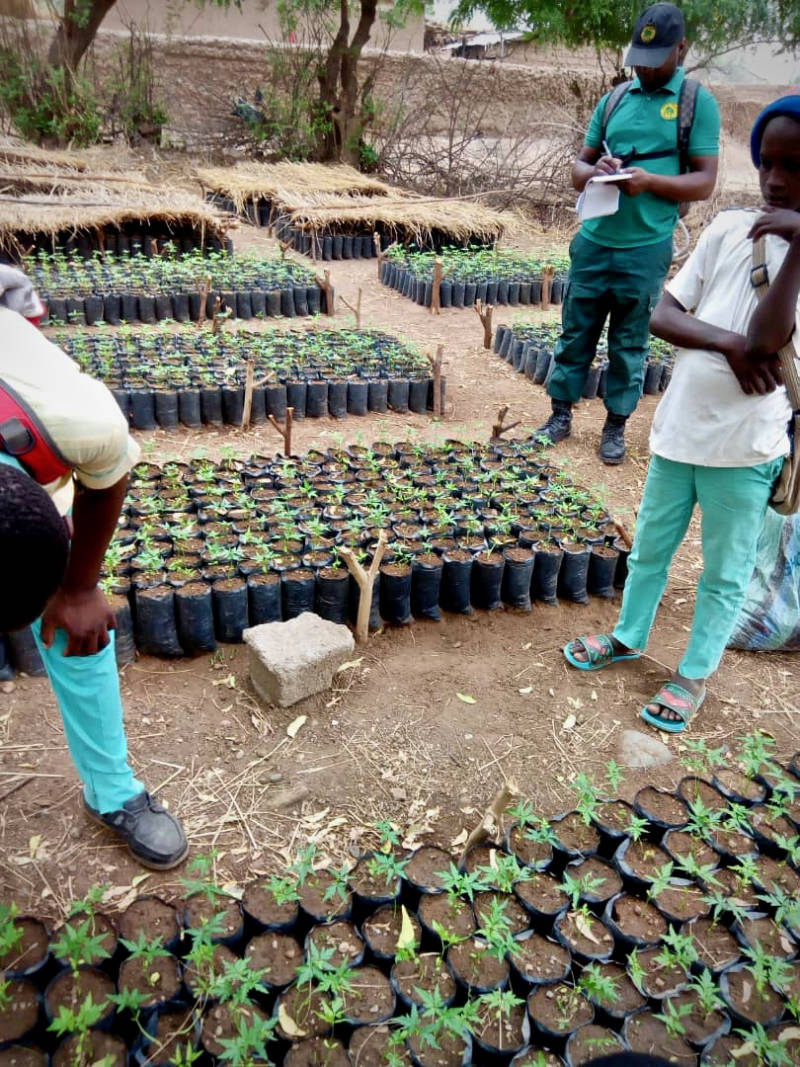
- Level 1: An approach for setting up small-scale pilot measures (best practices) to serve as an example (demonstration space), for various objectives with various actors and on various types of land
- Level 2: Support and follow-up of key processes at the strategic level, international commitments and scaling up of successful pilot measures
Aside providing technical support to the government of Cameroon, GIZ is also supporting the AFR100 secretariat to advance forest landscape restoration works in some selected African countries including Cameroon. It is within this framework that restoration and reforestation initiatives are currently been supported in the Northern Region of Cameroon.
Approach
Sensitization of various levels on ‘’the issue’’ – fuel wood scarcity and deforestation (ignorant activities)
Because long-term sensitization remains the backbone of conservation, development and forest landscape restoration initiatives, the program laid emphasis on continuous sensitization focusing on targeted issues related to restoration and land degradation. This focused on every level of the social setting including religious tendencies which in the area are very sensitive.
Gender balance during sensitization and planning sessions
Community Planning (Agreement)
One main issue considered is the full participation of various social levels in working sessions and ensuring their total participation and involvement in decision making and implementation. The idea here was to consolidate community and expert opinions while ensuring there is a link between indigenous knowledge and science. This guided field interventions both seedling production and site choice. Community socio-community reforestation site monitoring was paned to involve everyone irrespective of gender to give opportunities for every individual to express commitment to site monitoring. Women were considered at every level, from planning through field implementation.
Household-based approach
The approach implemented here is based on the need to target households and not individuals. This approach relied on sensitization aimed at demonstrating the pitfalls of deforestation and community actions contributing towards deforestation. Practical examples were being considered to over-emphasise on the tremendous contribution of community actions to increasing climate change impact on a local and global scale. Following this approach, efforts engaged were accounted for as household efforts. Every participant participating in activities was considered as representative of the household and consequently bearer of valuable information. The creation and management of individual wood lots (benefits), is currently been practiced by a hand full of households who express great benefits from the practice. It is a source of income and energy, serving a lot to satisfy household needs including natural benefits such as low temperature (micro-climatic condition) could also serve as seed collection basin. This is an opportunity to encourage while laying emphasis on its management.
Setting up community or village nurseries and management
The follow-up stage of the project focused on increasing community participation through gender balance. Target community level was the women and youths (girls) around the socio-community landscape restoration site. It went from increased sensitization to demonstrating women benefits in participating in landscape restoration following global strategic orientations of the sustainable development goals. Consciousness is characteristic of every female and it was considered as a motivating factor facilitating community mobilisation.
Women taking the lead in setting up a community nursery
Building the link in development interventions aimed at climate change mitigation and livelihood improvement
Fuel-wood harvesting remains the key driver to deforestation in and around the Mogazang landscape with a yet to be estimated loss in terms of forested land. This is closely related to the quest for household income through the sales of fuel wood, harvested from nearby and far off hills where some community members assume there is still enough forest.
The restoration initiative as an entry point demands that there be a clear benefit for those taking part in the activities, especially the women and youths. This approach consisted of exhibiting and practicing reforestation and low fuel wood consumption. The support with improved stoves and three stone cooking sites is a way of introducing communities to sustainably managing the forest around the area. The improved stoves and three stone cooking pot stands are locally adapted technologies which minimize fuel wood energy consumption during cooking.
Non-timber forest product value chain development through the use of neem (Azadirachta indica) seedlings by oil production has also changed local perceptions and women are now convinced taking part in reforestation with neem trees can be a great opportunity to raise their income.
Mogazang women introduced to non-timber forest product value chain (Neem, Azadirachta indica)
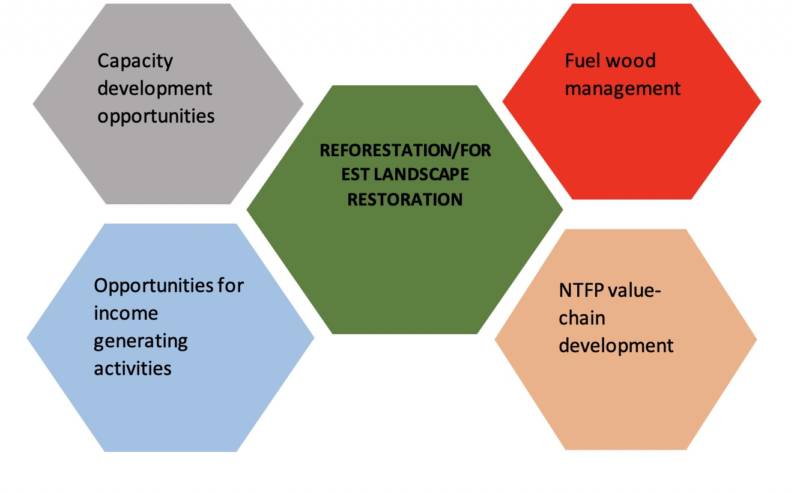
Ensuring women participate in forest landscape restoration initiatives
Results
- The increasing participation of women in the restoration initiative at Mogazang has led to an estimated reforested community land of 16.86 ha between 2017 and 2019
- 170 women and youths are engaged in the restoration initiatives and can contribute in decision making prior to planning and implementation
- Women groups can realize the need to develop the available resource base and ensure its sustainability as well
- Five women groups are currently being revitalized and organized to enable them to benefit from opportunities that will accrue from the community reforestation initiative
- There is growing enthusiasm by women to take up fully reforestation activities in the community, with willingness to plant more trees in their farms and also creation of individual fields
- Women are involved in neem oil production with an average monthly production and income of 12 of litres and 42.000 FCFA per woman
Challenges
- Land tenure problems make it difficult to access land for reforestation initiatives at community level
- Encroachment of reforestation site by livestock (sheep and goats)
- Ownership of initiative is still an issue, hence poor protection plan of the site
- Low literacy rate makes annex activities such as trainings slow to understand and sometimes complicated
- Clashes in the calendar between agricultural activities and reforestation activities
- Cultural limitations on women presence in activities alongside men
Recommendations
- Agroforestry should be practised especially as a means to increase soil fertility
- Follow up with a consolidated approach, clearly demonstrating the correlation between project ideas within the same program
- Encourage and support individual actions aimed at increasing efforts towards restoration initiatives
- Build a strong link between restoration initiatives and development interventions as a benefit and incentive to participation
- Involve women in planning sessions and ensure their participation in decision making.
- Initiate negotiations to protect degrading patches of forest (mainly hill areas) for regeneration (community bargain)
- Consider the development of a Rural Resource Centre for seed/seedling production which could serve as an income generating activity and job creation opportunity.
Conclusion
Mainstreaming gender and forest landscape restoration activities could consolidate and offer substantial opportunities for leveraging synergies between restoration commitments, climate change action and global obligations to sustainable development. Women and youths could play a strong role in reforestation initiatives if there is clear demonstration of accrued long and short-term opportunities that could serve as a benefit plan.
References
Agarwal B. 2010. Gender and Green Governance: The Political Economy of Women’s Presence within and beyond Community Forestry. London: Oxford University Press.
Broeckhoven N and Cliquet A. 2015. Gender and ecological restoration: Time to connect the dots. Restoration Ecology 23(6):729–736.
Coleman EA and Mwangi E. 2013. Women’s participation in forest management: A cross-country analysis. Global Environmental Change 23:193–205.
Clewell AF and Aronson J. 2013. Ecological Restoration. Washington, DC: Island Press/Center for Resource Economics.
Dudley N, Mansourian S and Vallauri D, eds. 2005. Forest landscape restoration in context. In Forest Restoration in Landscapes – Beyond Planting Trees. New York: Springer.
Leisher C, Temsah G, Booker F, Day M, Samberg L, Prosnitz D, Agarwal B, Matthews E, Roe D, Russell
D, et al. 2016. Does the gender composition of forest and fishery management groups affect resource governance and conservation outcomes? A systematic map. Environmental Evidence 5(6). https:// environmentalevidencejournal.biomedcentral.com/ articles/10.1186/s13750-016-0057-8.
The authors
The copy has been provided by Efuetlancha Taleih Atem and Tchigankong Desire, GIZ/ProPFE.

